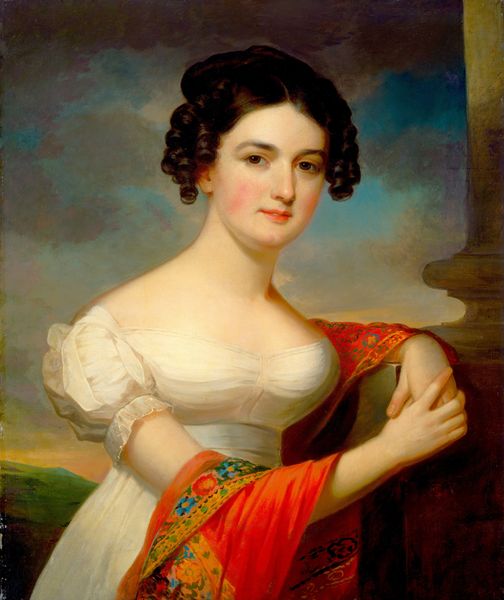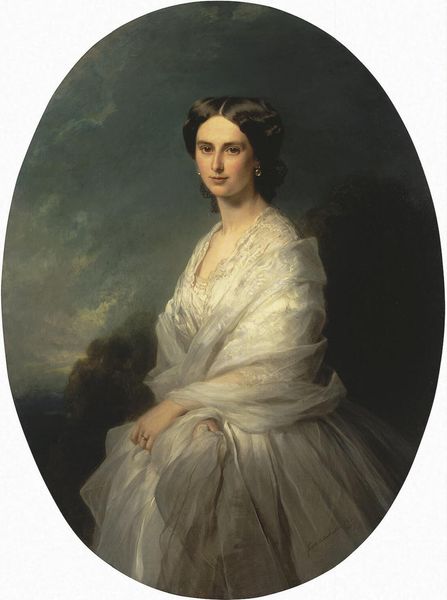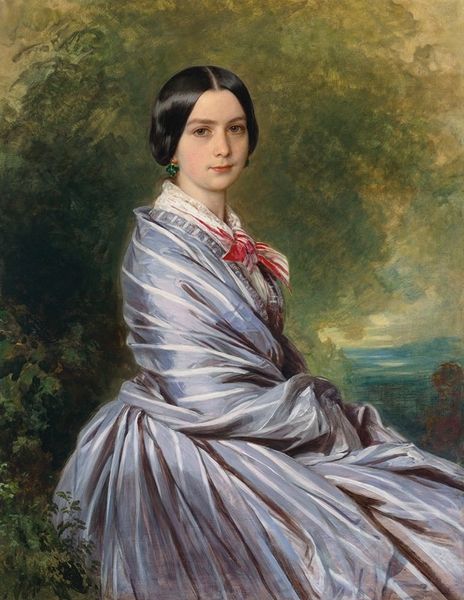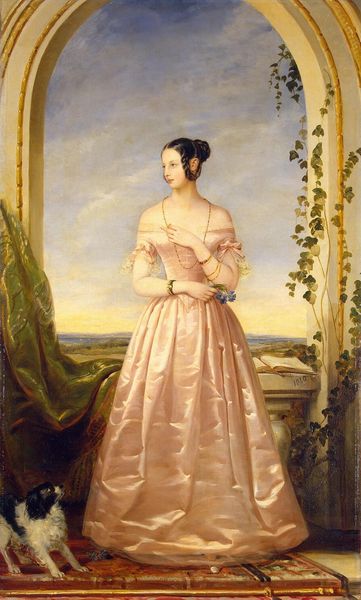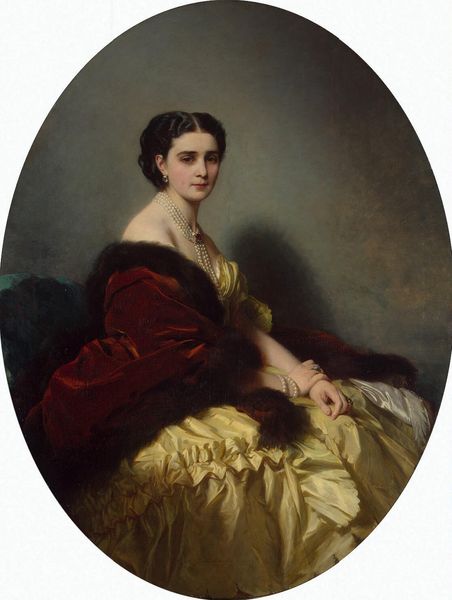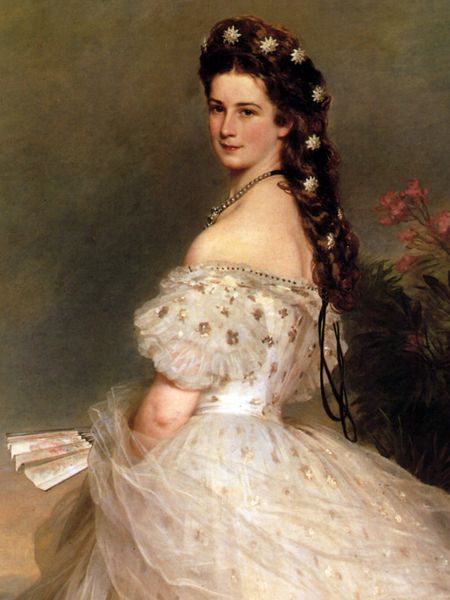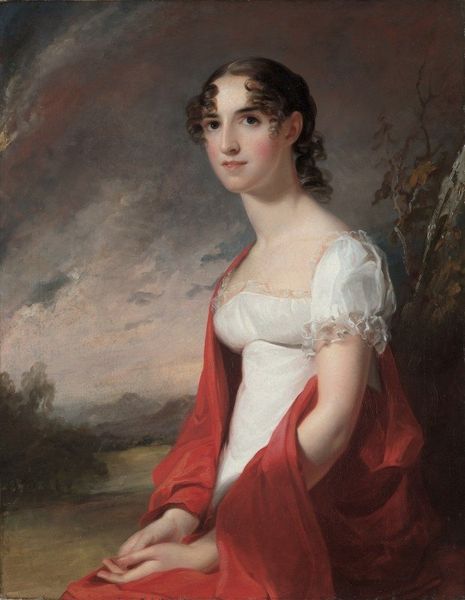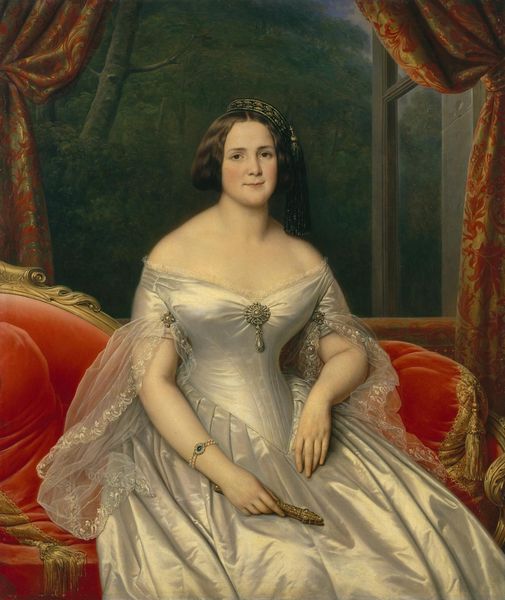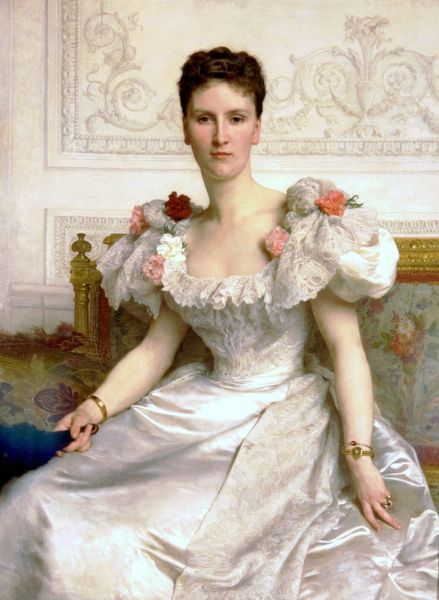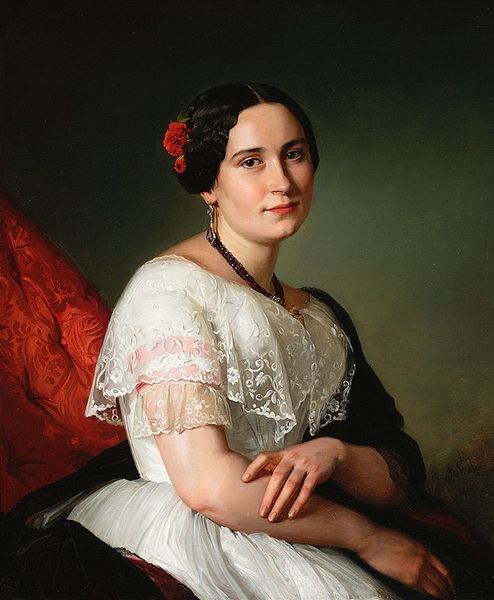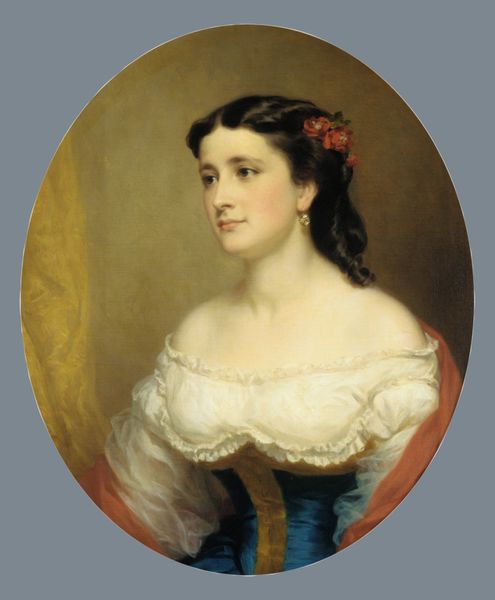
Copyright: Public Domain: Artvee
Curator: Here we have Alexandre Cabanel's "Portrait Of Mademoiselle Louise Marès," painted in 1851. A stunning example of Romanticism infused with the rigor of Academic art. Editor: My first impression is one of poised melancholy. There’s a stillness, an almost photographic quality to her gaze, set against that turbulent sky… it's striking. Curator: Absolutely. Cabanel was deeply involved with the official art establishment, winning major prizes at the Salon. This piece exemplifies that. The soft light, the almost idealized depiction of Mademoiselle Marès... Editor: But that idealization isn't uncomplicated, is it? Consider the whiteness here – the dress, the skin… it reinforces certain power dynamics, locating Mademoiselle Marès within a specific social strata. Is it also communicating ideas around purity and innocence? Curator: Indeed. Portraiture of this era served very specific functions. These works affirmed status and family connections. It would have been about upholding societal ideals more than revealing individual personality. Editor: The pink sash is the sole flash of color amidst that careful composition; it draws our eye but what does it signify? It offers a softness, an echo of budding romance. Also her dark hair in tight curls contrasts nicely against that expanse of white fabric. I do wonder about agency in this representation. Curator: Considering Cabanel’s later fame for history paintings and allegorical subjects, one could argue the controlled pose of the portrait hints at the societal constraints placed upon women of that era. Even in a private portrait, the subject is performing a role. Editor: That's a great point. Her expression is almost neutral, but the surroundings are anything but passive. It feels staged – she’s literally framed by the artifice of cultivated nature and picturesque landscaping, suggesting an upper-class leisure. But do we get any true insight into Louise? Or are we meant to simply admire this projection? Curator: It's likely both. As historians, we unpack how power, patronage, and even beauty, are constructs of their time. But to ignore her likeness entirely is another type of erasure. Editor: Precisely! The challenge is recognizing those limitations and seeking nuances beyond them. A balancing act of social context, art theory, and aesthetics to enrich a reading. Curator: Precisely, what endures in portraiture like this are tensions and the possibilities that remain in revealing the unspoken undercurrents. Editor: Absolutely, that's where our contemporary view point helps unlock deeper meaning within them. Thank you for your insightful observation.
Comments
No comments
Be the first to comment and join the conversation on the ultimate creative platform.
